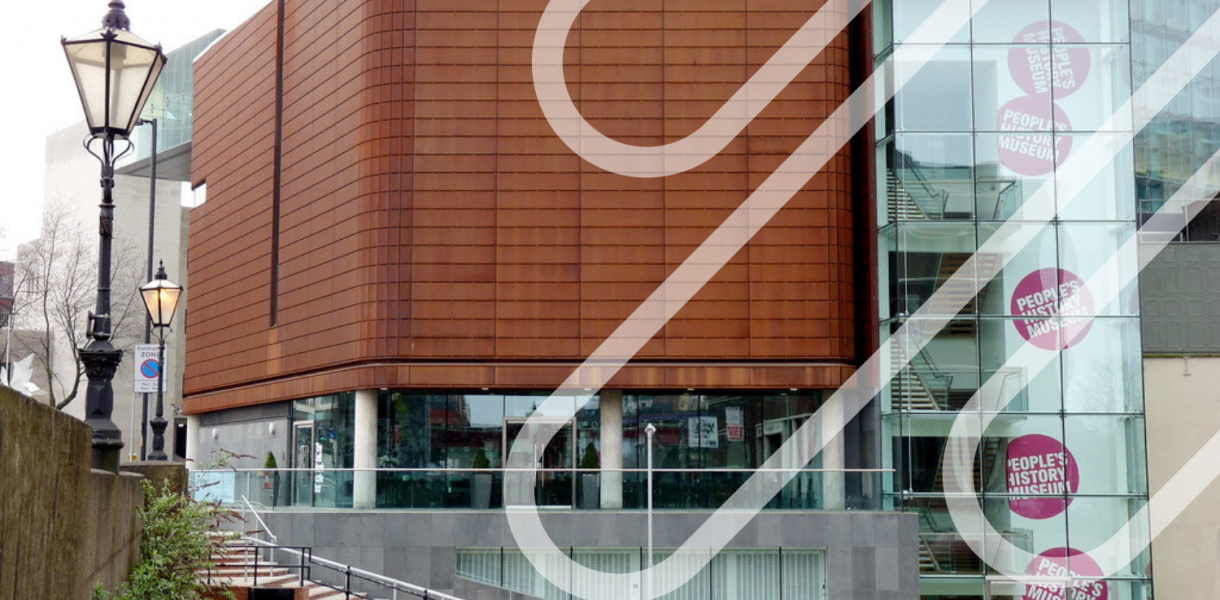Need Assistance? Call one of our experts today on: 0844 980 2218 Email: info@hflbuildingsolutions.co.uk
Need Assistance? Call one of our experts today on: 0844 980 2218 Email: info@hflbuildingsolutions.co.uk
Home/The People’s History Mus...

Client
Time Duration
Responsibilities

The People's History Museum attracts 100,000 visitors per year and is located within a Grade II listed former hydraulic pumping station on the corner of Bridge Street and Water Street in Manchester. Redevelopment of the site in 2010 included the construction of a new building for the Museum's major collections.
As the UK's national centre for the history of the working class, the People's History Museum brings together a fascinating collection of printed material, physical objects and photographs charting over 200 years of ordinary people at work and leisure.
Looking to improve their financial stability and meet their pledge for carbon footprint efficiency, the Museum commissioned HFL Energy Solutions to undertake a full energy audit of the site.
The purpose was to identify any appropriate interventions that would enable the Museum to reduce its energy costs. In particular, they wished to reduce the levels of electricity consumption across the original Grade II listed building and the newer property.
We’re very pleased that our recommendation is helping the People’s History Museum to make even greater savings on energy costs. This is a prime example of how a comprehensive energy audit can add extra value to an organisation which is already conscious of their carbon footprint. | Dave Saxton, Managing Director - HFL Building Solutions
Looking to improve their financial stability and meet their pledge for carbon footprint efficiency, the Museum commissioned HFL Energy Solutions to undertake a full energy audit of the site. The purpose was to identify any appropriate interventions that would enable the Museum to reduce its energy costs. In particular, they wished to reduce the levels of electricity consumption across the original Grade II listed building and the newer property.
HFL Energy Solutions undertook a comprehensive assessment of the buildings, which covered resource efficiency and energy control, energy use and efficiency, lighting and heating, water use and also a compliance review to ensure that legislative requirements relating to environmental issues were being met. Following analysis of the collected data, the HFL team produced a report detailing the Museum's current baseline, potential savings, recommendations and forecasted ROI.
It soon became evident that the museum had already adopted several energy-saving initiatives; however HFL Energy Solutions believed that the installation of Voltage Optimisation Equipment would improve energy efficiencies even further. The recommendation was approved and the Museum commissioned the Voltage Optimisation Equipment, with HFL managing the entire build and installation process.
It soon became evident that the museum had already adopted several energy-saving initiatives; however HFL Energy Solutions believed that the installation of Voltage Optimisation Equipment would improve energy efficiencies even further. The recommendation was approved and the Museum commissioned the Voltage Optimisation Equipment, with HFL managing the entire build and installation process.
Over the initial period following installation the People's History Museum experienced an average energy saving of between 7 % - 14% due to load fluctuation, with an estimated overall average of 10.56% in energy consumption during his period. The reduction in voltage should also equate to a reduction in maintenance costs and deterioration of appliances and plant. Facilities Manager, Steve Talbot, is suitably impressed with HFL's recommendation and its impact on energy usage. The recommendation was approved and the Museum commissioned the Voltage Optimisation Equipment, with HFL managing the entire build and installation process.
Freeman House, Orbital 24, Oldham Street, Denton, Manchester M34 3SU